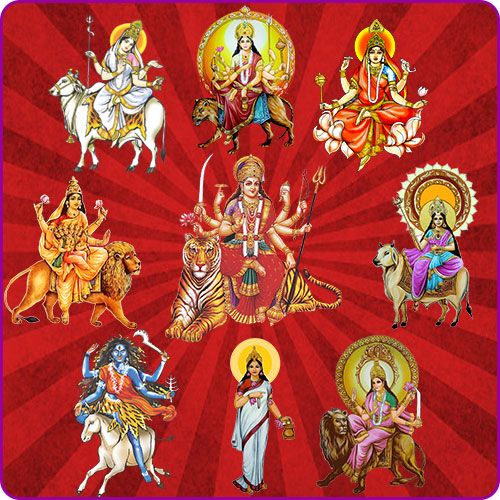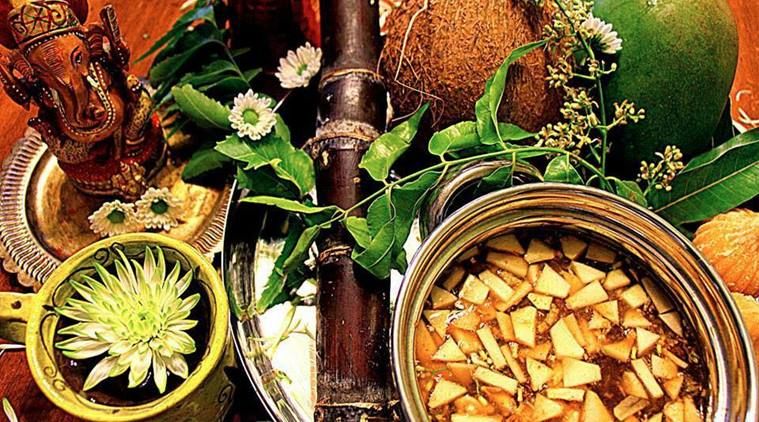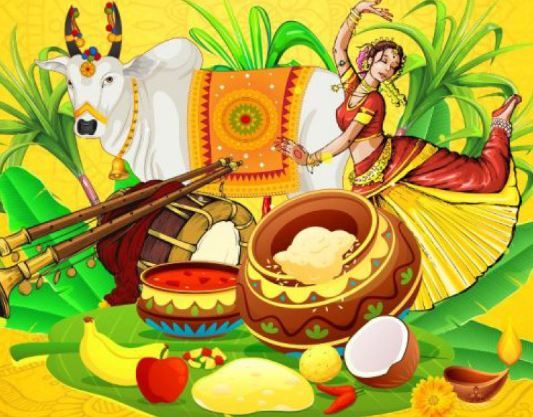
Navrathri
Navratri is a nine-night Hindu festival that celebrates the goddess Durga and her various forms. It usually occurs in the lunar month of Ashvin, which typically falls between September and October in the Gregorian calendar. The festival symbolizes the victory of good over evil and is marked by vibrant celebrations, fasting, prayers, and cultural events. \\#\# Key Aspects of Navratri: 1\. \\Deities Worshipped\\: Each of the nine nights\, one of the nine forms of Durga \(Navadurga\) is worshipped\. The forms are: \- \\Day 1\\: Shailaputri \(the daughter of the mountains\) \- \\Day 2\\: Brahmacharini \(the ascetic maiden\) \- \\Day 3\\: Chandraghanta \(the one who has a crescent moon on her forehead\) \- \\Day 4\\: Kushmanda \(the creator of the universe\) \- \\Day 5\\: Skandamata \(the mother of Skanda\) \- \\Day 6\\: Katyayani \(the warrior goddess\) \- \\Day 7\\: Kalaratri \(the fierce form of Durga\) \- \\Day 8\\: Mahagauri \(the goddess of purity\) \- \\Day 9\\: Siddhidatri \(the giver of accomplishments\) 2\. \\Rituals and Worship\\: Devotees typically engage in fasting and prayer\, with elaborate rituals performed in homes and temples\. Many people participate in "Aarti" \(a devotional song\) and "Havan" \(fire rituals\)\. 3\. \\Cultural Celebrations\\: The latter part of Navratri\, particularly in Gujarat\, is known for Garba and Dandiya Raas\, traditional folk dances that are enjoyed by people dressed in colorful attire\. In some regions\, people also prepare and perform plays and dramas depicting the stories of goddess Durga\. 4\. \\Vijaya Dashami/Dussehra\\: The festival culminates with Vijayadashami or Dussehra\, which symbolizes the victory of Lord Rama over the demon king Ravana\, and is celebrated with processions\, the burning of effigies\, and other festivities\. 5\. \\Regional Variations\\: The way Navratri is celebrated can vary significantly across different parts of India\. In some regions\, it may focus more on dance and music\, while in others\, it may be more centered on religious observance and prayer\. Navratri is a time for spiritual reflection, community bonding, and cultural expression, making it one of the most vibrant festivals in the Hindu calendar. Navrathri is a significant festival in South India, and flowers play an essential role in the pooja (worship) rituals. Here are some of the flowers commonly used: 1\. \\Jasmine \(Mallige or Mogra\)\\: Known for its lovely fragrance\, jasmine is used to make garlands and offer to deities\. It's also used in hair offerings and decorations\. 2\. \\Marigold \(Sembharuthi or Tagetes\)\\: Marigolds are vibrant and are used in garlands\, decorations\, and offerings\. Their bright yellow and orange hues are considered auspicious\. 3\. \\Hibiscus \(Sembaruthi\)\\: This flower is often used in offerings\, particularly to the goddess Durga\. It is believed to be particularly sacred for goddess Kali and Lakshmi\. 4\. \\Rose \(Rosa\)\\: Roses are used for their beauty and fragrance\. They can be offered in various colors\, with red and pink being particularly common\. 5\. \\Lotus \(Padma\)\\: Although not always readily available\, lotus flowers are considered highly sacred and are offered to deities\, symbolizing purity and divine beauty\. 6\. \\Oleandar \(Arali\)\\: These flowers are used in decorations and offerings due to their vibrant colors and robust nature\. 7\. \\Chrysanthemum \(Sankhapushpam\)\\: Chrysanthemums are used in garlands and decorations\. Their bright colors and variety make them a popular choice\. 8\. \\Tuberose \(Rajnigandha\)\\: Known for its strong fragrance\, tuberose is used in making garlands and in various decorations\. In South Indian households, these flowers are often strung into garlands or used to decorate the altar and the surroundings of the pooja area. The choice of flowers might vary depending on regional practices and availability, but these are generally among the most common ones used during Navrathri celebrations.

Tamil New Year - Sun, Apr 14, 2024
1. Puthandu, the Tamil New Year, marks a time for new beginnings and strengthening bonds through religious ceremonies. 2. The custom of 'Kanni' involves setting up a plate with various items for good luck and prosperity, symbolizing an auspicious first sight of the New Year. 3. Homes are decorated with 'Kolam' designs made of rice flour, with a lamp called 'Kuthuvilakku' placed in the center to symbolize the dispelling of darkness. 4. People wear new colorful clothes and exchange greetings of 'Puthandu Vazthukal' or 'Puthandu Pirappuv', wishing each other a Happy New Year. 5. Traditional vegetarian dishes like Aluva, Asma, and Kevum are prepared for the occasion, along with special treats like Mango pachadi and payasam. 6. Children receive gifts and blessings from elders, while families visit temples to seek divine blessings and perform rituals like 'Tharpanam' for their ancestors' souls.

Ugadhi - Telugu New Year - Tue, Apr 9, 2024
Ugadi, a festival centered around new beginnings and fresh starts, is often preceded by a week of preparation including cleaning the home, buying new clothes, and gathering necessary items. On the day of the festival, people dress in their favorite attire, greet others, and take part in various festivities such as offering prayers, creating rangoli patterns, and enjoying traditional Ugadi dishes. One popular dish, Ugadi pachadi, combines jaggery, neem flowers, mango pieces, and tamarind to create a unique blend of sour, sweet, and bitter flavors that symbolize the diverse experiences of life. While the Hindu new year is celebrated throughout India with different names like Vaisakhi and Gudi Padwa, the underlying messages of hope, growth, and love remain the same across all regions.

Maha Shivrathri for California USA - Fri, Mar 8, 2024, 8:27 AM – Sat, Mar 9, 2024, 4:47 AM
There exists an enigmatic and unfamiliar force that propels all of humanity. Despite scientists being unable to assign it a name, ancient saints have referred to this enigma as Shiva. Shiva is believed to be the vital energy that animates all living beings, enabling us to perform essential functions such as breathing, eating, and walking. This energy not only drives living organisms but also permeates non-living entities, serving as their life force. In the midst of our daily routines, we often forget the source of our energy, the very essence that sustains us. Mahashivratri, a festival dedicated to Shiva, serves as a reminder to reconnect with the fundamental basis of our existence. The celebration of Shivratri is attributed to various legends, including the sacred union of Lord Shiva and Parvati, Lord Shiva's consumption of poison to save the world, his act of catching and releasing Goddess Ganga, and the manifestation of the formless God Sadashiv as a Lingodhbhav Moorthi. On this auspicious night, people stay awake, offering prayers and engaging in rituals to pay homage to Lord Shiva. Mahashivratri is a day to honor and celebrate Lord Shiva, as well as to appreciate and celebrate the gift of life itself through prayer, meditation, and festivities. On Mahashivratri, there are several activities you can engage in to honor and celebrate Lord Shiva and embrace the essence of existence. Here are some suggestions: 1. Observe fasting: Fasting on Mahashivratri helps detoxify the body and calm the mind, making it easier to slip into meditation. It is recommended to fast with easily digestible foods or fruits. You can find more guidelines on Mahashivratri fasting. 2. Meditate: The alignment of constellations on the night of Mahashivratri is considered highly auspicious for meditation. It is advisable to stay awake and engage in meditation during this time. 3. Chant Om Namah Shivaya: Reciting the sacred mantra "Om Namah Shivaya" is a powerful way to connect with Lord Shiva and invoke his blessings. 4. Attend Mahashivratri Puja or Rudra Puja: Participating in Mahashivratri Puja or Rudra Puja ceremonies is a traditional way to honor Lord Shiva and seek his divine grace. 5. Worship the Shivalinga: Paying homage to the Shivalinga, a symbol of Lord Shiva, is a common practice on Mahashivratri. Offer prayers, flowers, and water to the Shivalinga as a sign of reverence. These activities will help you make the most of Mahashivratri and deepen your spiritual connection with Lord Shiva.

Indian Flowers for Sankranti
During the Sankranthi Pongal festival in South India, flowers play a significant role in the celebrations. People decorate their homes and temples with vibrant and fragrant flowers to create a festive atmosphere. Marigolds, jasmine, and roses are commonly used for this purpose. These flowers are carefully arranged in colorful garlands and intricate floral patterns called rangoli. The vibrant colors and sweet fragrance of the flowers add to the joy and beauty of the festival. Additionally, flowers are also offered to deities as a form of worship. The use of flowers during Sankranthi Pongal festival highlights the cultural and religious significance of nature in South Indian traditions. We are sourcing Turmeric and Ginger Stems for this special occasion.
